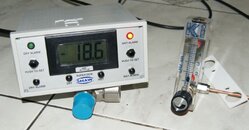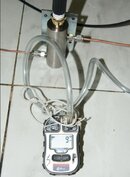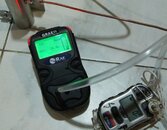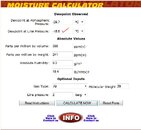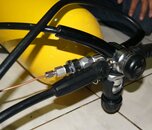"I have looked at popular Mako 27" PD-1083 filter cartridge size which contains HP, at 30C ambient, it can do approx 60 hours at 200 bar or roughly 300 tanks of 80CF at 500 psi empty, if the dew point set as -50C as wettest. This filter cartridge is only US$60 from Lawrence Factor at retail. This means 6000 cents / 300 tanks = 20 cents per air tank for filter media only but with Hopcalite protection.
M87 will buy in quantites, price will be better."
I meant to say 60 hours at
200 liter per minute at 200 BAR.
Calculation is based on approx 1,100 grams of molecular sieve in that cartridge.
I had wanted to self packed a Hopcalite, but I will need another small filter housing to keep the hopcalite. It is not worth the few $$ hopcalite savings I am getting if I were required to buy another high pressure filter housing. Besides it will be best to have hopcalite before an activated carbon since Hopcalite converts CO to CO2.
I bought a 33" tower, it is similiar to Mako type MK2C or Bauer P2 ( Bauer P61 in Europe ). This tower uses the Mako PD-1803 or whatever equivalent Lawrence Factor cartridge commonly sold. This is the common 27" tall cartridge. I am taking my sweet time rigging it to my Bauer Mariner 200, almost a year and I have not complete it yet...ha ha ha. Too many change of plan along the way.
I have not got my hands on the PD-1803 yet, I bought a self-packed filter cartridge hoping I will save money on the molecular sieve (MS ) and the activated carbon (AC). However, considering buying MS or AC to any degree of getting a good price means I need to buy in 25kg( 55 lbs ) pack at least, my frequency of air fill will not hit 25kg + 25kg of AC & MS even in a year.

AC and MS when not kept properly, it will adsorb moisture. I do not want to oven them every time before use. If I do not oven them, they will not perform properly. I don't know if I ever need to oven AC, but MS need to be rid off any water moisture. MS is such a great H20 sucker, its hard to keep it in pristine condition once packaging is opened up. If the packaging is plastic, 6 months from date of production, it is expected to be quite "wet" even un-opened. In steel drums, it is 2 years storage life but how many years will I need to finish off a 55 gallons drum....

So my current plan is simple.
PD-1803 in a 33" tower as 1st stage, 2nd stage is the Bauer P41 filter tower with original Bauer filter cartridge. Landed cost to my country these two filters will cost approx 60+85+50 shipping if I buy in 5 each quantity. So each set will be approx US$195 for approx 93 hours of use at 30C ambient or 465 tanks, or 42 US cents per tank. I get plenty of activated carbon and double hopcalite bed. If I use P21 or P Zero as known in USA, it is US$36 for 25 tanks = US$1.44 per tank. So I decided not to re-pack. I can even go cheaper by not using my P41 cartridge that cost a bomb, but since I already bought and paid dearly for a P21 to a P41 filter system upgrade, I might as well enjoy the double protection it can offer me.
I was looking at Lawrence Factor equivalent PD-1803 photo on the net and cut open my Bauer p/n 067224, the P41 filter cartridge with Hopcalite and I was sorely unhappy. The amount of activated carbon in this P41 - p/n 067224 is simply too little. MS does not take away poisons , the activated carbon does. I don't want to save money over air quality.
I asked our mutual expert friend if he ever cut open Bauer filter cartridge of PD-1083 size equivalent and he confirmed to me that the AC bed on that Bauer 27" filter cartridge is less than what Mako and Lawrence Factor packed on similiar 27" cartridge. He has compared at least 4 different 27" filter cartridge sizes and its media arrangement..........dang he is the true "CSI".
I thought I am the only one with itchy hands cutting open Bauer aluminum filter cartridge to have a look see how they arranged the medias........hold and behold there is someone else with itchier hands....ha ha ha. More MS means longer filter life, but at some risk. This industry popular filter size 27" is 27", be it Mako or LF or Bauer, they all carry the same room for media content. No wonder Mako claimed lower filter life ( total processed air ) than Bauer, Mako cartridge contained more AC over the Bauer.
Bauer uses the aluminum filter cartridge for filter housing P31 and bigger size. This hide the media arrangement from plain sight.
So lesson learnt, never rely on total MS capacity alone and do cut open filter cartridge to see why one brand can claim more processing air capacity over another brand....and at what risk ?
As compressor gets older and more worn out, one thing surely will increase in the production air is the oil vapor. This is one fact we can't avoid because worn out means more blow-by from pistons and the oil rings on the pistons will be worn out accordingly with the compression rings. If piston blow-by limits not monitored properly and timely overhaul not conducted, activated carbon amount of X grams when compressor is still very healthy will produce great air but once compressor gets worn, that AC amount may not be enough. If a dive operator wait for compressor to fail to hit operating pressure or other obvious mechanical problems and not by consistent monitoring of the piston blow-by limit, or at the least look at the color and the oil content in water condensate at water separator, some "worn-out" hours of the compressor operation may accelerate the saturation of the activated carbon and produce bad quality air, even when the dew point sensor reads dry air.
I was curious to see if a filter life already exceeded, based on dew point temperature of the production air.......... will poison like CO pass thru to the tank ? What I did was to detect CO from the final water separator of my compressor, before this air goes to the filter media in the filter housing. My compressor being equipt with a P41 filter system type, has an air outlet that I can sample the air before it flows into the filter media to be treated. The result was zero PPM of CO but I can smell oil vapor. So, smelly and having CO is totally two different things. And what baddies that smelly air contained ?...........no idea, all I know that that air did not go thru the filter media at all, but if I dive with it, I will surely puke...

One thing for sure my compressor is not hitting above 132C cylinder head temperature, so I would not get CO from burning oil.
I then recalled, I got a pony tank which went on a dive trip in Oct 2009. It never got the air emptied. So some 3 months ago, I smelled the air in the tank. It was smelly, but no CO in it. Unfortunately I did not measure the water content/ dew point temperature. I also remembered on that trip the air was not smelly. So air can be smelly when kept too long...hhm 1 year in my case.
Then I waited for one day, a customer tank that comes to my place with CO in it.
I did manage to get one such tank at 9 PPM CO. Owner wanted to hydro the tank, so I can play with it all day long dumping its air. I rigged my dew point thermometer and run the test.
I tried CO reading with both ToxiRAE 3 and QRAE 2, both read 9 ppm. I use both just to be sure.
NOTE :
This pressure versus wetness is the reason that cheap chemical humidity indicator ( humidity plug ?? ) can work. Even when using a 10% humidity patch, at 2,000 psi or 136 BAR pressure and at 40C air temperature, it is equivalent to air dryness of approx -51C dew point temperature. Of course assuming the chemical sensor is 10% RH accurate. I have yet to compare how accurate is this chemical moisture indicator against the electronic dew point sensor.
Anyhow, since I am using 2 BARg as the pressure reading for the dew point sensor, I have to convert it to to ambient pressure. So this tank that contained 9PPM of CO, reads -18.6C but that is 2 BARg, so I have to convert it to ambient pressure and it is still a "wet" -29.7C or 241 PPM ( water by weight ) at atmospheric/ambient pressure.
This tank will fail the water content test by any standards. If we go by dew point temperature, probably a Hopcalite which needs -40C to work properly will not be effective at this -29.7C. I doubt the compressor that filled up this tank has hopcalite, because the cartridge must be self import. As far as I know, local Bauer dealer do not stock it in my country because it cost more and process less air and no one really care much about Hopcalite. If we go by PPM water content, it has approx 12x more water content of EN12021 standard for 200 BAR ( 25 mg/m3 = 20 PPM by weight for compressor outlet).
A regular 80CF tank that has 24PPM of water as -50C dew point will pass the air test for water content by most standards, 24PPM is 0.03 gram of water per m3 of air. 80 CF tank is approx 2,200 liters of air, so 0.03 grams x 2.2 = 0.066 grams of water allowed. 1 gram of water is approx 20 drops of water, so 0.066 grams is like 1.3 drops of water.
Actually the European EN 12021 standard for water content is quite smart, it said :
The maximum water content of the air measured at:
a compressor system outlet for filling cylinders, should not exceed 25 mg.m3.
a cylinder outlet, cylinder pressure from 40 to 200 bar, should not exceed 50 mg.m3.
a cylinder outlet, cylinder pressure >200 bar, should not exceed 35 mg.m3.
Source :
http://www.hse.gov.uk/pubns/dvis9.pdf
They seems know well that a brand new tank, even though 100% brand new or just recently VIP, it will contribute to some wetness of the air when the tank is filled up from a compressor and then the air is sampled from the tank. If the tank has lots of use and had previous "wet" air in it, even filling from 500 psi to 3,000 psi with dry air, the water content reading won't be as dry as if we read it directly from compressor filler whip.
If there is a need for filling a small test tank for air analysis, I would open up the bottle and place it in a plastic bag with enough dryer/dessicant to make sure the tank internal is dry after sometime and install the tank valve within the plastic bag and then fill the test tank directly from a compressor, not from a scuba tank. Of course we expect the compressor is using a filter with close to end-of-life , to get a more honest result.
So back to this tested tank with 241 PPM of water is like 13 drops of water content per 80CF tank. Dang, so little water yet so "wet" by standard.
So the summaries are :
Smelly air always contain CO....??......not always but sure is a good sign things are not properly maintained.
Smelly air contains enough "poisons" to endanger diver ?? I honestly did many dives with smelly air before CO detector days and when I was much younger. I must admit it felt like $hit, I get headache and I wanted to throw up but never fainted though ( lucky me ) and I play shallow when I get smelly air and I could not dive long. Will I do it again...??.....no way !! I am getting older and I value my life more

, no I do not have loan on the house...

Analox does not make dew point sensor. The real manufacturers for dew point sensors that can go as low as -80C are not that many. Many ready to use system sold by some brands are not using their own sensors, they are more like tailors. Buy material from A, B and C and sell you a ready to use tuxedo.
This is my source :
Shaw Moisture Meters Superdew Hygrometer
Attached the reading of the dew point sensor in Celsius and the reading of 9 PPM CO confirmed by 2 detectors.




 Personal tank testing will remain as important as before, and hell to pay if that is observed.
Personal tank testing will remain as important as before, and hell to pay if that is observed.